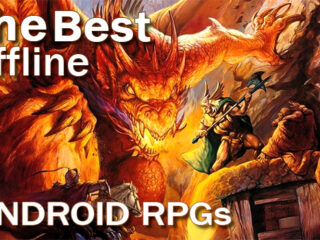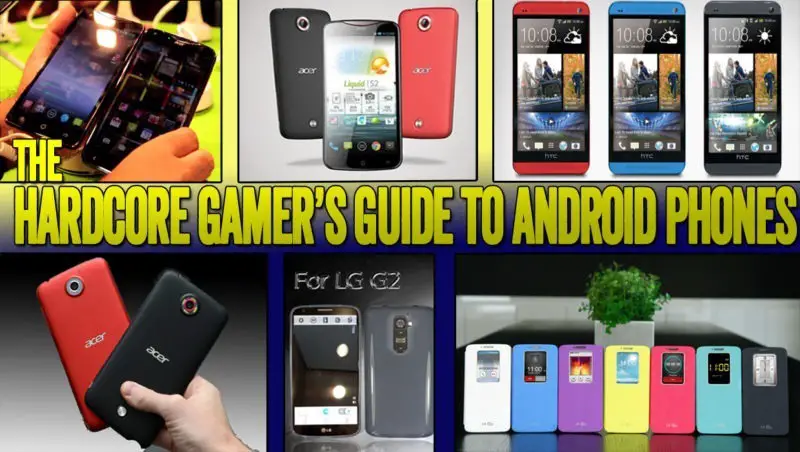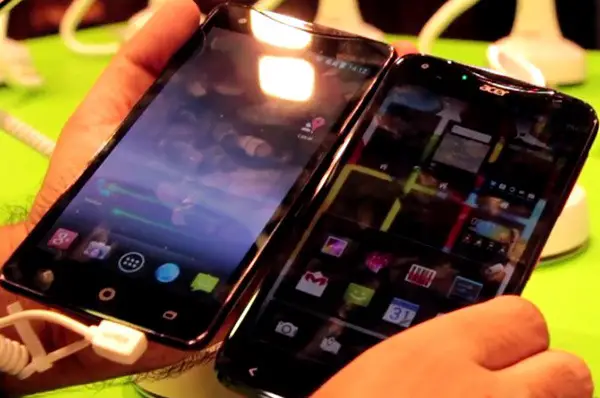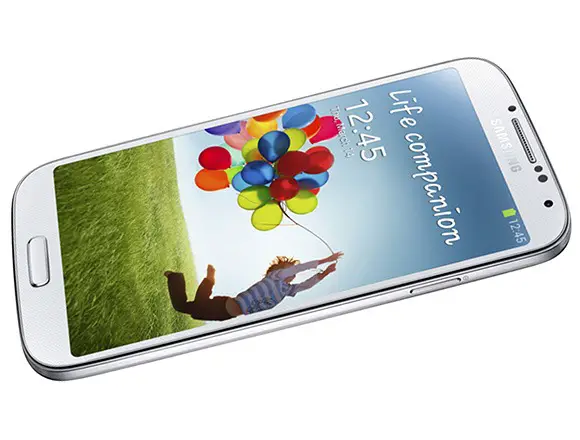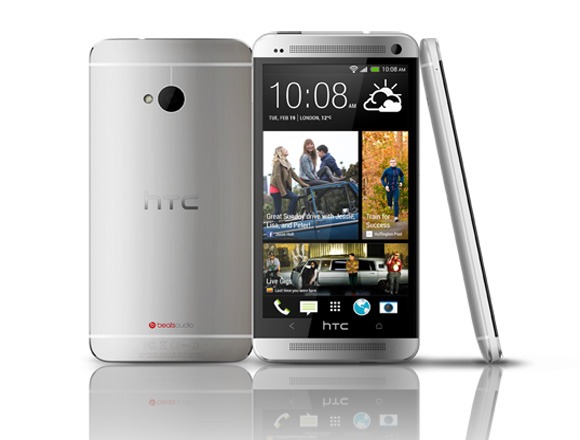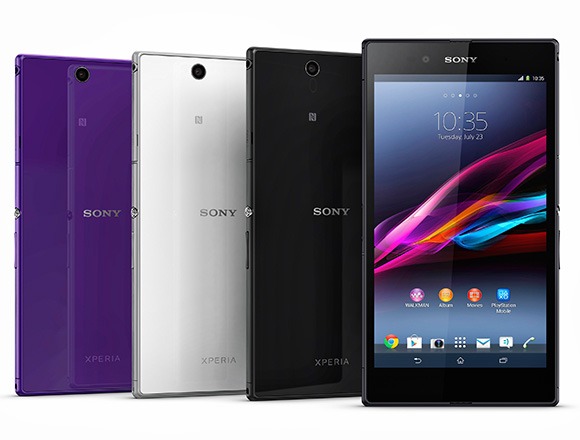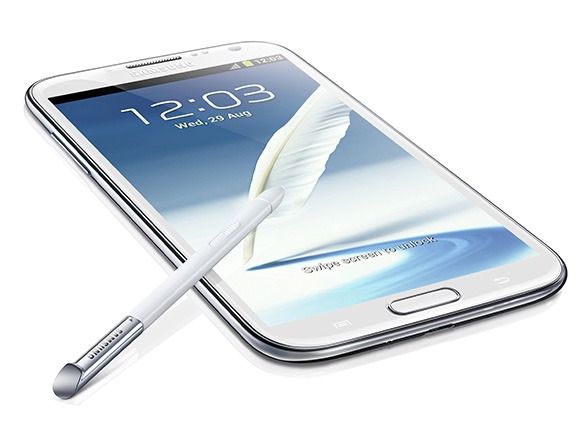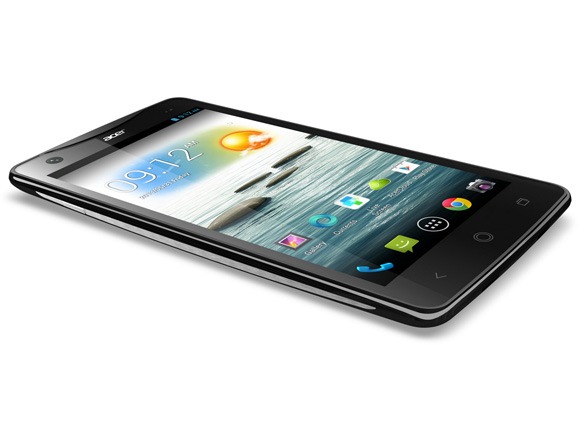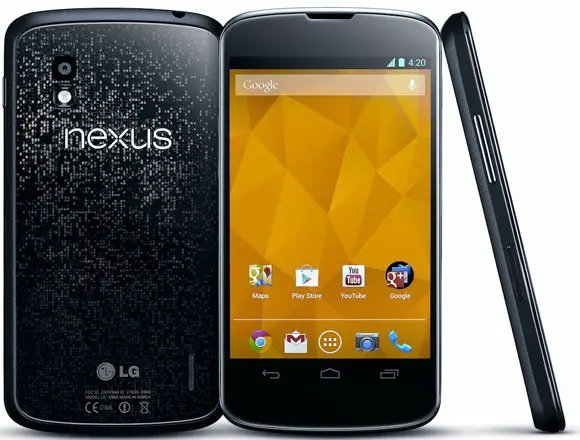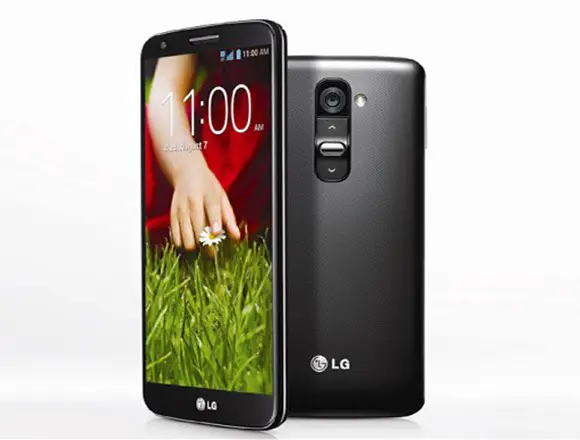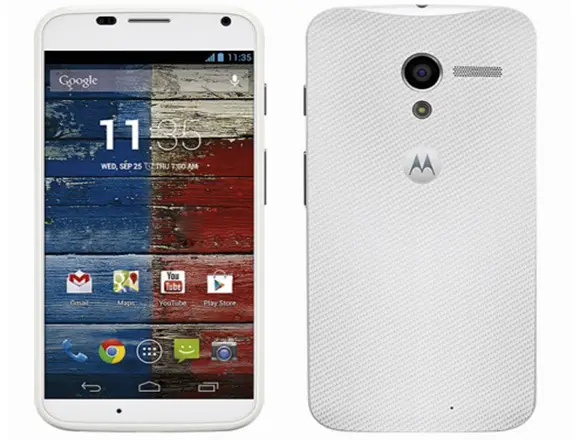Even as the power of mobile devices is outpacing Moore’s Law, and graphics power seems to double every year, it’s a sad fact that phones simply aren’t marketed toward gamers. Walk into a phone store and ask a rep about a phone’s CPU. If you’re lucky, they might tell you how many cores it has, but getting a real idea about a phone’s performance is going to require some independent research. Even then, not everything is equal. Chips grouped under the same family are sometimes radically different on the inside, and even a savvy shopper might be surprised to find his phone comes up short. We’re here to cut through the nonsense and give you some straight talk about which phones are best when games matter most.
Which Specs Matter
Usually, when you go to buy a phone, the vital stats will list the number of cores and the clock speed as an indicator of performance, but this doesn’t really tell the whole story. One CPU may be able to process more instructions per cycle (IPC) than another, and it may be able to process them more efficiently. The GPU in a phone is almost never advertised and is usually clocked independently from the CPU, despite being on the same die. It’s usually best to look at the overall performance of the System-on-Chip, but even then things like memory bandwidth can impact performance.
It’s also a reality that, despite the theoretical performance of these chips have been increasing dramatically, the real world gains are often not as large as those numbers would suggest. One of the main reasons for this is the sharply rising resolution on phones. The Galaxy S4 may be several times as powerful as the Galaxy SIII, but its 1920 x 1080 screen has more than twice as many pixels as the 1280 x 720 display in the SIII. The net result is that frame rates in a game on the S4 will “only” be about twice what they were on its predecessor.
Software Matters
Despite much of the hype from the mod community, carrier “bloat” and “skinned” versions of Android are relatively minor factors on gaming performance, although they can affect things like the battery life and consistency of scrolling. In some cases, “skinned” versions of Android like Samsung’s TouchWiz may actually offer optimizations that may improve gaming performance.
The main reason why you performance-minded users may want to research a phone’s ability to use after-market ROMs like Cyanogenmod and AOKP is simply for access to timely updates. As of this writing, Android has recently upgraded to 4.3, and only Nexus devices and the Google Experience versions of the HTC One and Galaxy S4 are the only devices for which this version has officially been released.
Cyanogenmod, a popular customized version of Android, has recently updated to 10.2, which brings Android 4.3 to at many devices that will likely be waiting quite some time for official support. The latest version of Android is notable to gamers for its upgrade to OpenGL ES 3.0. This means more effects and better performance in those games written to take advantage of it. As of right now, Asphalt 8 and a handful of benchmarks are the only apps that support 3.0, but as time goes on, this will be more important.
Not all phones are capable of modifying the operating system. Some have locked bootloaders to prevent non-standard software. Some of these phones have workarounds, but others are still waiting, and some may wait forever. If it’s important for you to get timely updates (or any updates at all after maybe a year or so), then it would be wise to investigate both the ability of a phone to support these ROMs, and the quality and stability of those ROMs on that particular device.
The Tests
In this article, we’re going to focus on benchmarks that reflect real-world performance. We’ll be using GLBenchmark and 3DMark, both of which test the phone’s ability to display advanced 3D graphics. We won’t be using any “offscreen” or resolution-independent tests, either, since we want to concentrate on what gamers can expect in the real world.
GLBenchmark’s Egypt test is a somewhat older test that had long served as the gold standard for testing mobile performance. Now, this test is limited by the 60 Hz refresh rate on many devices, and may not accurately reflect how dramatic the gap in performance is between lower-end and higher-end devices. For that we go to T-Rex, a much more demanding test that features more modern effects and higher polygon counts. At present, no device is even close to hitting 60fps during this test.
3DMark offers a more abstract result, but it’s nonetheless a very practical reflection of a device’s graphical capabilities compared to other tests. There’s an Extreme variant designed to test performance with the effects dialed up, but both are reasonable indicators of performance since 3DMark works around the 60Hz Vsync limit.
The Phones
Samsung Galaxy S4:
Since the release of their Galaxy S line, Samsung has become almost synonymous with Android, eclipsing Verizon’s Droid brand, and producing a product that could finally be seen as a rival to the iPhone. Their latest iteration is hardly a game-changer, but it’s still one of the best overall phones on the market. It continues the trend of offering a slimmer frame and a larger screen, but it does it without adding to the phone’s dimensions or weight. The removable plastic back may not be as sleek as some of the unibody designs out there, but it offers expandable memory and a replaceable battery at a time when many phones are sealing off easy upgrades in favor of expensive premium versions.
Inside, the Galaxy S4 is a beast. The Snapdragon 600 inside is clocked at 1.9Ghz; faster than the 1.7 Ghz version found in earlier devices. This chip features a quad-core Adreno 320 GPU, the same very capable GPU found in the higher-end variants of the S4 Pro chips. The extra juice is definitely needed to power the phone at a full 1080p resolution, but the extra pixels don’t go to waste. The S4’s screen is incredibly crisp and capable of some truly impressive detail, although the AMOLED technology is outperformed in bright sunlight by the LCD panels in some competing phones.
It’s important to note that there are, in fact, quite a few subtle variants of the S4. In foreign markets, there are Octa-core Exynos versions that don’t perform quite as well and don’t have the same level of support for after-market ROMs compared to the Snapdragon versions. Recently, both Verizon and AT&T have put out updates that lock the bootloaders and prevent the phone from running custom ROMs. If custom firmware is important, make sure to inspect the box and get an old version (UCMDL on AT&T and UCMDK on Verizon) and avoid any updates. AT&T’s ruggedized Active variant remains locked as well.
3DMark Ice Storm: 11892
3DMark Ice Storm Extreme: 6682
GLBenchmark 2.5 Egypt: 40.6 fps
GLBenchmark 2.7 T-Rex: 15.0
HTC One:
HTC’s latest flagship is a very sexy phone indeed. It sports the same Snapdragon 600 chipset as the Galaxy S4, albeit clocked slightly lower, and it screams in games. Its full HD screen is arguably the best of any phone on the market, and in bright light it outperforms Samsung’s AMOLED offerings. The sleek metal unibody design is also very nice, and feels great in the hand.
Of particular interest to gamers, the One sports a pair of stereo speakers on the front of the phone that are loud and clear, and far superior to anything else on the market. Obviously headphones are always going to be best, but it’s liberating to be able to hear and enjoy your games even when you don’t have a pair of ear buds handy.
It’s also worth noting that, since the HTC One has an official “Google Experience” variant that runs stock Android, there is excellent access to the latest updates, source code, and thus high-quality after-market ROMs. Unlike the Galaxy S4, there isn’t the need to worry about a locked bootloader, either.
On the downside, the One doesn’t allow you to add storage with an SD Card, nor to replace its (slightly disappointing) battery. It’s also missing the settings/menu button present on most phones, which seldom affects games but can certainly be annoying in general.
3DMark Ice Storm: 10859
3DMark Ice Storm Extreme: 6557
GLBenchmark 2.5 Egypt: 40.0
GLBenchmark 2.7 T-Rex: 14.6
*
Sony Xperia Z Ultra:
Sony’s new phone-tablet hybrid aims to beat the formidable Galaxy Note 3 to the punch. Sporting a massive 6.4” screen, it feels like pure luxury. That size may be unwieldy for making phone calls, and could be prohibitive to those with daintier pockets or tighter clothes, but playing games on that giant screen is just so nice.
Inside, the Ultra is also one of the first phones to sport Qualcomm’s top-of-the-line Snapdragon 800, which marks a pretty hefty upgrade over the 600 found in the One and S4. It uses the Adreno 330 GPU for better 3D gaming performance and makes upgrades to the Krait CPU core as well.
Although there’s some development already, it’s too soon to say what kind of homebrew support we can expect long-term from the Ultra. Sony’s monster confirmed for a US launch on AT&T, but it’s still unknown if this will include any changes to the bootloader or if ROMs from the international version will be compatible.
3DMark Ice Storm: 16662
3DMark Ice Storm Extreme: 11512
GLBenchmark 2.5 Egypt: 47.3
GLBenchmark 2.7 T-Rex: 23.5
Samsung Galaxy Note 3:
Samsung popularized the phone-tablet hybrid with the original Note, and it’s continuing the annual tradition. Only slightly larger than its predecessor, the 5.7” screen is hardly the biggest in town anymore, but it might still offer the right balance between a roomy screen and pocketabilty. Where the Galaxy Mega and Xperia Z Ultra seem almost prohibitively large, the Note 3 still manages to be just barely small enough to be a reasonable phone.
Inside, it sports the same Snapdragon 800 processor as many other phones on our list, at least in its American iterations. The international Exynos-based versions lag behind a bit, in start contrast to previous generations of Galaxy phones. It’s certainly among the most powerful phones that will be available this calendar year, but it’s the interface options that set it apart.
As in previous generations, the Note 3 is anomalous in the market for its use of a stylus, the S-Pen. This is probably its biggest distinguishing feature, and Samsung has gone to lengths to better integrate this feature with new commands and support in more apps. There’s also increased support for multitasking and windowed apps, which makes TouchWiz seem like a pretty compelling option for once.
Acer Liquid S2:
Acer has yet to be a big player on the phone market, but the Liquid S2 is their most ambitious unit yet. Set for release later this year, it sports a huge 6” screen and a solid colored metallic construction, making it a very eye-catching device, but it’s what’s inside that makes it stand out.
Like the Xperia Z Ultra, the Liquid S2 sports a 2.2Ghz Snapdragon 800, which will make it one of the most powerful phones on the market. It’s also the first phone to shoot 4K Ultra HD video, although it remains to see if the quality of Acer’s sensor is enough to really justify this resolution.
It’s also worth noting that, while the Liquid S2 is not officially a “Google Experience” phone, the version of Android it runs sticks very close to stock Android, so Nexus fans should feel right at home. This will likely bode well for future support, although the fact that it ships with Android 4.2 is slightly discouraging.
GLBenchmark 2.5 Egypt: 46.0
GLBenchmark 2.7 T-Rex: 23.0
Google Nexus 4:
Based on the popular Optimus G, the Nexus 4 is the latest in Google’s line of Android flagships, designed to evangelize the “pure” Android experience as Google envisions it. The One and the S4 also offer mostly stock versions, but still rely on their OEMs for updates, and have a few deviations under the hood. Nexus 4 is still one of the first devices in line for updates, so if it’s important to know that you’ll have Android KitKat before you friends, this could be the way to go.
As a piece of hardware, the Nexus 4 is no longer top-of-the-line, but in practical terms, it’s still a strong performer. The Snapdragon S4 Pro chipset may be last gen, but it actually features many of the same internals as the newer 600 model, albeit at a lower clock speed. The 720p screen still looks great, and it can hold its own in any modern game. A year from now, that may not be the case, but for now, it’s a very solid gaming phone.
The biggest reason to consider the Nexus 4 option is economy. Available at a shocking $200 off-contract, the Nexus 4 is one of the cheapest phones on the market, and while its specs may be mid-range, there’s simply nothing even close for that price. It does offer a few major disadvantages. The back is sealed in glass, prone to iPhone 4-style damage, sealing out any hope of expanding the memory or replacing the battery. It has no LTE support, which makes it a poor choice for any carrier without HSPA+ support like Verizon or Sprint. On AT&T, T-Mobile, and international carriers, HSPA+ can still serve data at decent speeds, making this seem like a good way to save money without having to settle for something mediocre.
3DMark Ice Storm: 9976
3DMark Ice Storm Extreme: 5916
GLBenchmark 2.5 Egypt: 20.7
GLBenchmark 2.7 T-Rex: 41.4
LG G2:
Not the first phone to rock the “G2” moniker, but LG’s latest follows their successful Optimus G, arguably LG’s first true contender in the world of high-end flagships. The G2 is a formidable refresh, trading in glass for a sturdier polycarbonate construction, and newly upgraded internals.
The G2 sports the same Snapdragon 800 processor as the Xperia Z Ultra and Acer Liquid 2, but without the bulky oversized “phablet” form factor. Its 5.2”, 1080p screen can rival Samsung and HTC’s offerings, with quite a bit more muscle under the hood. If you’re looking for power in a standard phone size, it’s hard to beat the G2.
3DMark Ice Storm: 12018
3DMark Ice Storm Extreme: 9903
GLBenchmark 2.5 Egypt: 51.2
GLBenchmark 2.7 T-Rex: 23.1
Motorola Moto X:
Ok, so maybe the Moto X isn’t “hardcore” exactly, but it’s one of the seasons most talked about phones for a reason. The first phone designed under Google’s guidance after their buyout of Motorola, it represents an appealing mix of fashion and practical design. Part of Android’s appeal has always been about customization, and Moto X’s made-to-order color schemes seem like a perfect match for that philosophy; a way for owners to make a phone that truly feels like their own.
On paper, its specs seem very mid-range. It features a dual-core Snapdragon variant that features the same basic parts as the 600, but with fewer cores. This might lead some to laugh it off as half as powerful, but in reality very few apps are well optimized for four cores, and its lower resolution screen takes some of the burden off the GPU. In practical terms, it can hold its own, and in our benchmarks it held up perfectly well against theoretically more powerful phones.
The real issue comes down to price. The Moto X is a somewhat conservative – if practical – spec, but it sells for the same $200 on-contract as phones that are truly high end. Sacrificing a higher resolution screen and some extra cores for a fashion statement isn’t usually the sort of thing we gamers do, but the Moto X can at least hold its own.
3DMark Ice Storm: 11226
3DMark Ice Storm Extreme: 6968
GLBenchmark 2.5 Egypt: 54.1
GLBenchmark 2.7 T-Rex: 25.4













